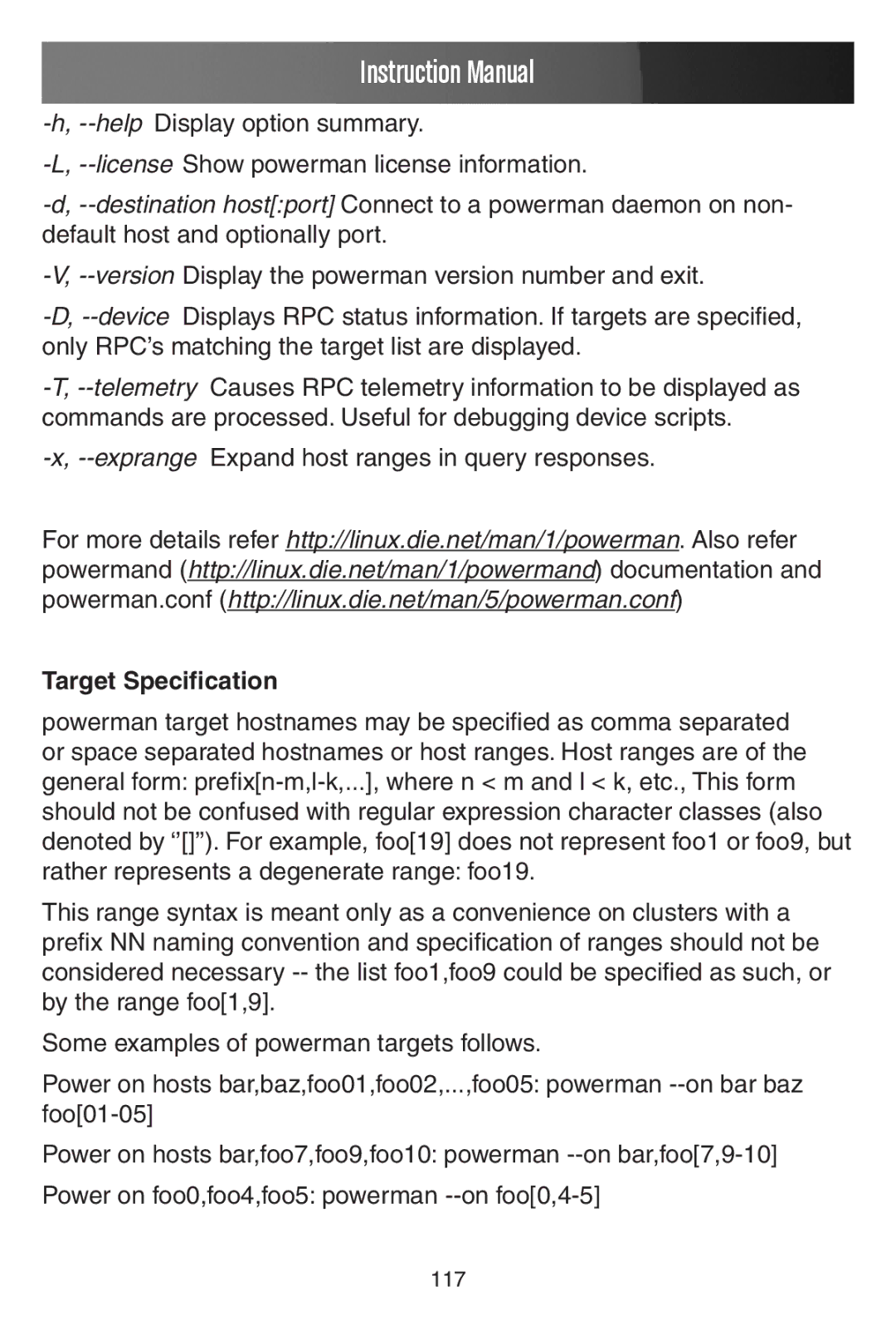Instruction Manual
-h,--helpDisplay option summary.
-L,--licenseShow powerman license information.
-d,--destination host[:port] Connect to a powerman daemon on non- default host and optionally port.
-V,--versionDisplay the powerman version number and exit.
-D,--deviceDisplays RPC status information. If targets are specified, only RPC’s matching the target list are displayed.
-T,--telemetryCauses RPC telemetry information to be displayed as commands are processed. Useful for debugging device scripts.
-x,--exprangeExpand host ranges in query responses.
For more details refer http://linux.die.net/man/1/powerman. Also refer powermand (http://linux.die.net/man/1/powermand) documentation and powerman.conf (http://linux.die.net/man/5/powerman.conf)
Target Specification
powerman target hostnames may be specified as comma separated or space separated hostnames or host ranges. Host ranges are of the general form: prefix[n-m,l-k,...], where n < m and l < k, etc., This form should not be confused with regular expression character classes (also denoted by ‘’[]’’). For example, foo[19] does not represent foo1 or foo9, but rather represents a degenerate range: foo19.
This range syntax is meant only as a convenience on clusters with a prefix NN naming convention and specification of ranges should not be considered necessary -- the list foo1,foo9 could be specified as such, or by the range foo[1,9].
Some examples of powerman targets follows.
Power on hosts bar,baz,foo01,foo02,...,foo05: powerman --on bar baz foo[01-05]
Power on hosts bar,foo7,foo9,foo10: powerman --on bar,foo[7,9-10]
Power on foo0,foo4,foo5: powerman --on foo[0,4-5]
